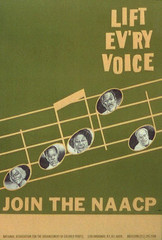Two stories of sprawl
I have no desire to write about the traffic to be generated by the move of military operations from well-served by public transportation places in Arlington County and other places to the unwell-served by transit Fort Belvoir in Fairfax County. But the Post wrote about it today, in "Paralyzed Roads Envisioned Near Belvoir." What's to say other than "duh?"
In some respects you can say this is but one more example of a federal government policy that (1) doesn't have a sound grounding in transportation and land use planning; and (2) off-loads some of the most significant costs onto local government. In this case, it's Fairfax County, so I am a little less concerned. But the waste and futility is still aggravating nonetheless.
An interesting figure from the article is that the average road interchange has a vehicle capacity of 1,500 cars/hour. Continuing to develop a car-centric transportation system makes little sense.
2. Baltimore isn't happy about the NAACP decamping to "Washington." But no matter how you slice it, National Harbor in Oxon Hill isn't Washington, it's Prince George's County, and this area isn't well-served by public transportation either. See "NAACP Weighs Move to Pr. George's," also from the Post, although this has been covered in an ongoing fashion in the Baltimore Sun.
Since they are committed to leaving, I'd like to see an attempt to lure the NAACP to the city proper, maybe as part of the proposed development around the Howard Theater, which is but a block or two from the 7th Street-Howard University green line subway station.
Or maybe other places along Georgia Avenue, although such would likely be less well situated vis-a-vis subway service, but not the 70s buses, as well as the forthcoming Georgia Avenue rapid bus service.

Index Keywords: sprawl



0 Comments:
Post a Comment
<< Home